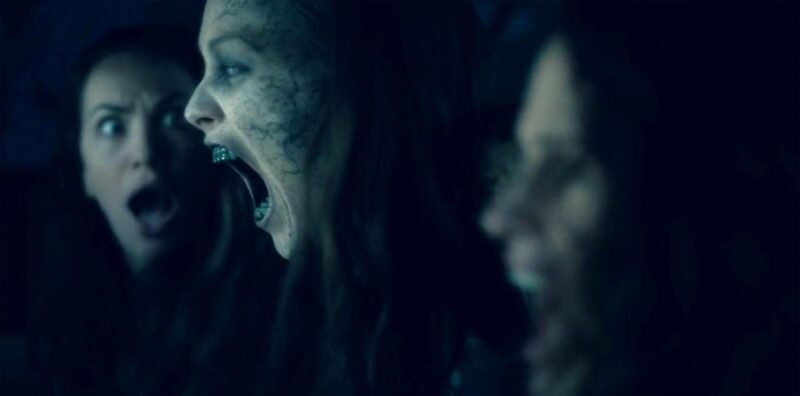The Haunting of Hill House (2018) became popular on Netflix after its release in October 2018. The show was about the Craine family moving into a house known as ‘Hill House,’ and their experiences with what we, as the audience, believe to be ghosts that haunt the home. But after a rewatch, a theory popped into my head that makes a lot of sense: what if Steve was right?
In The Haunting of Hill House, the eldest son, Steve Craine, is constantly stating how his family suffers from mental illness, though he never states the illnesses that they suffer from. Actually, the show itself does not bring up any specifics but just classifies it as ‘mental illness.’ For example, we see the youngest daughter, Nellie Craine, stop taking her medication, but we never know what the medication is for. In fact, all we ever know that Nellie is suffering from is sleep paralysis and that she sees a therapist regularly. I believe that this was done to convince the audience that the ghosts were not in their head, but maybe Steve was right. While during the show he was an unbearable character for breaking the immersion of a spooky, haunted house, he did have a few points that took a rewatch for me to figure out.

Nellie’s first encounter with the ‘bent neck lady’ ghost is when they move into Hill House, one of several moves the family has made while buying and flipping houses. Moves can be hard on a young child, especially when it comes to making friends or maintaining them. In this theory, it is believed that the bent-neck lady represents Nellie’s depression. The more frequently she sees the bent-neck lady, the more she is hurt by her depressed feelings. This makes sense for her to see the ghost at such a young age due to the moving and the treatment of her siblings not playing with her and saying everything is in her imagination.
This is evidenced when Nellie meets her future husband and she starts to see the bent-neck lady less often, meaning that she is happier and is coping with her depression. But, when her husband dies suddenly, the bent-neck lady returns, showing her depression returns. We then see Nellie go into a spiral as she stops taking her medication, and eventually dies. Even her death represents her succumbing to her depression and unfortunately taking her own life.

As we see flashbacks from when the family had first moved into the house, we learn that the house was infested with black mold. There are several different levels of mold exposure, but level 2 would make sense for what the Craines were suffering from. Some of the symptoms may be more physical like nausea, vomiting, and diarrhea, but it may also cause some mental problems. For example, an increase in depression or even nervous disorders.
The middle child, Theodora Craine, known as Theo, wears gloves everywhere she goes. She got them from her mother after sharing that she feels others’ feelings and intentions when she physically touches them, and it overwhelms her. On the surface, it can be shown as her having supernatural powers, but really the gloves represent Theo not being able to cope with her own emotions. The gloves also represent Theo not wanting to open up to others to hear their feelings as well. Theo is an empath who does not take negative emotions well, so instead she ‘puts on her gloves’ so that she can’t feel others’ emotions to protect herself. She also wears the gloves until adulthood which can also mean while wearing them she can still feel connected to her deceased mother because she was the one that gave them to her.
“The house killed her” is also a recurring piece of dialogue that many characters say when referring not only to the mother, Olivia’s, death but also Nellie’s. When the characters are referring to this they mean the ghosts/power of the house killed them, but in this theory, it means the move TO the house actually killed them.

The biggest metaphor in The Haunting of Hill House is in the last half hour of the last episode. The father, Hugh Craine, and the ‘ghost’ of the mother, Olivia, are talking about the red door in the Hill House.
Throughout their time in the house, no one was able to physically open it, but it represented each of their happy places. While their children are stuck in the room, Hugh brings up how he felt like he’s been holding the door closed so that the monsters would not get to them. The monsters in this metaphor mean the mental illness the family has continued to suffer from. Hugh never brought it up with his kids even when their mother died, even though it was a significant factor in her death. He didn’t want the children to think less of her, he wanted them to remember the positive light she was when she was alive.
Now I would like to specify; Steve was still a very unlikeable character: he lied to his wife about wanting children. He exploited his family’s trauma for money without asking them beforehand by writing about their experiences in the book he sold. He also never really tried to get help for the family members that needed it, he just shifted the blame onto his father and said all of their experiences in Hill House were just ‘mental illness.’ Instead of taking the steps to try and help his family, he would just call them crazy. While Steve was not a good person, he had some very strong points. But where he went wrong was not getting his family the help that they needed.
 PopHorror Let's Get Scared
PopHorror Let's Get Scared




